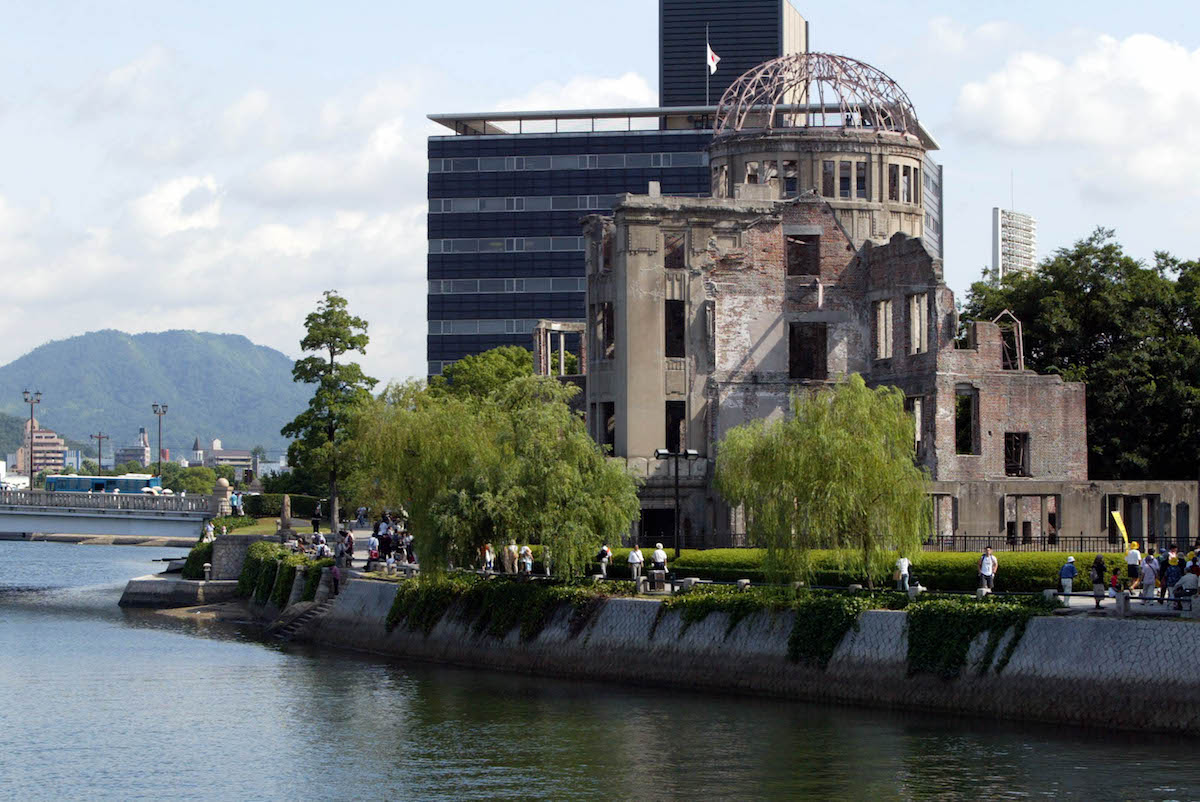- Hiroshima today looks completely different than it did 73 years ago.
- On August 6, 1945, the US dropped an atomic bomb on Hiroshima that destroyed most of the city and instantly killed 80,000 of its citizens.
- Today, Hiroshima has recovered into a bustling manufacturing hub with a population of 1.1 million people and counting.
- Here’s what Hiroshima looks like today.
On August 6, 2018, the 73rd anniversary of the bombing of Hiroshima, the residents of the Japanese city will pause to remember the day in 1945 that changed the course of history.
On August 6, 1945, the US bomberEnola Gaydropped the first atomic bomb ever used in military combat on Hiroshima. The Allied forces dropped a second atomic bomb on the city of Nagasakithree days later.
The device that explodedoverHiroshimadestroyedabout two-thirds of the city’s structures in a blindingflashof light. At the time, Hiroshima’spopulationwas approximately 300,000. The atomic bomb immediatelykilled80,000 and injured 35,000 more. By the end of 1945, 60,000 more people had died as a result of the blast.
Today, Hiroshima is a prosperous manufacturing hubwith apopulationof over 1.1 million.
Here's what the city looks like today and the lingering effects of the bombing:
1. August 6, 1945: the bomb nicknamed ‘Little Boy’ flattens Hiroshima

Almost 70% of buildings in Hiroshima were demolishedin the blast. The skeleton of theHiroshima Prefectural Industrial Promotion Hall, located only about 175 yards from the bomb's hypocenter,stoodstarkly among the rubble and became a symbol of the devastation.
2. The Atomic Bomb Dome: Hiroshima remembers

TheHiroshima Prefectural Industrial Promotion Hall, a multifunctional building created in 1915 that was used for research and design consultation,was one of the few buildings left standing after the blast.
Now a part of the Hiroshima Peace Memorial, the Atomic Bomb Dome,orGenbaku Dome, is a UNESCO World Heritage site.
3. Hiroshima shadows: after the blast

The heat from the atomic blastburned lasting shadowsonto walls and pavements in the shapes of the objects in its path. The most haunting Hiroshima shadows are the outlines of victims who were going about their daily lives when the bomb was dropped. Today, some shadows aredisplayedat the Hiroshima Peace Memorial Museum.
4. The movement for peace in Hiroshima

Sites in Hiroshima often draw peace activists. In 2005,Greenpeacemembers launched inflatable doves in front of the Atomic Bomb Dome on the day before the Hiroshima anniversary.
5. A day in the life of Hiroshima

The routines of daily life in Hiroshima are much like any other large city in Japan. Visitors can enjoy okonomiyaki, a savory pancake the Visit Hiroshimawebsitecalls "Hiroshima's soul food," while exploring the city's livelynightlife.
The city has launched a forward-looking planning process calledHiroshima 2045: City of Peace and Creativity, with a focus on designing a modern, distinctive urban landscape. Still, thememoriesof the past are never far away.
6. Survivors take action for disarmament and advocate for world peace

Hiroshi Harada, pictured in 2015 in front of thecenotaph, or memorial for those who died, inPeace Memorial Park, built near the epicenter of the 1945 bombing. Harada is a hibakusha, which is a term for survivors of the Hiroshima and Nagasaki bombings, and a former head of theHiroshima Peace Memorial Museum.
7. A city that promotes world peace

In 2017, the International Campaign to Abolish Nuclear Weapons (ICAN) won theNobel Peace Prize. Setsuko Thurlow, a hibakusha, gave a movingacceptance speechfor the group in Oslo.
In 2018, Beatrice Fihn, ICAN executive director, (second from left) visited Hiroshima's Peace Memorial Museum, which preserves artifacts and survivor stories in hopes of "No More Hiroshimas."
8. Hiroshima Peace Memorial Ceremony

Japanese Prime Minister Shinzo Abelays a wreath during the Hiroshima Peace Memorial Ceremony at Hiroshima Peace Memorial Park on August 6, 2016 in Hiroshima, Japan.
9. A historic meeting in Hiroshima

In 2016, Barack Obama became the first sitting US president totravel to Hiroshima. He laid a wreath during a ceremony at Peace Memorial Park with Japanese Prime Minister Shinzo Abe and greeted Hiroshima bombingsurvivors.
10. August 6: a day of remembrance

In Hiroshima, on August 6, church bells ring at 8:15 am, the exact moment the bomb dropped. That begins a day of remembranceceremoniesthat culminates in the hauntingly beautifulToro Nagashifestival, where hundreds of lanterns are floated down the Motoyasu River, in front of the Atomic Bomb Dome.
Toro Nagashi began in Tokyo in 1946, andHiroshimapicked it up the following year. The lanterns are a tribute to those who perished in the bombing and an assurance that Hiroshima and the world will never forget what happened there on August 6, 1945.

